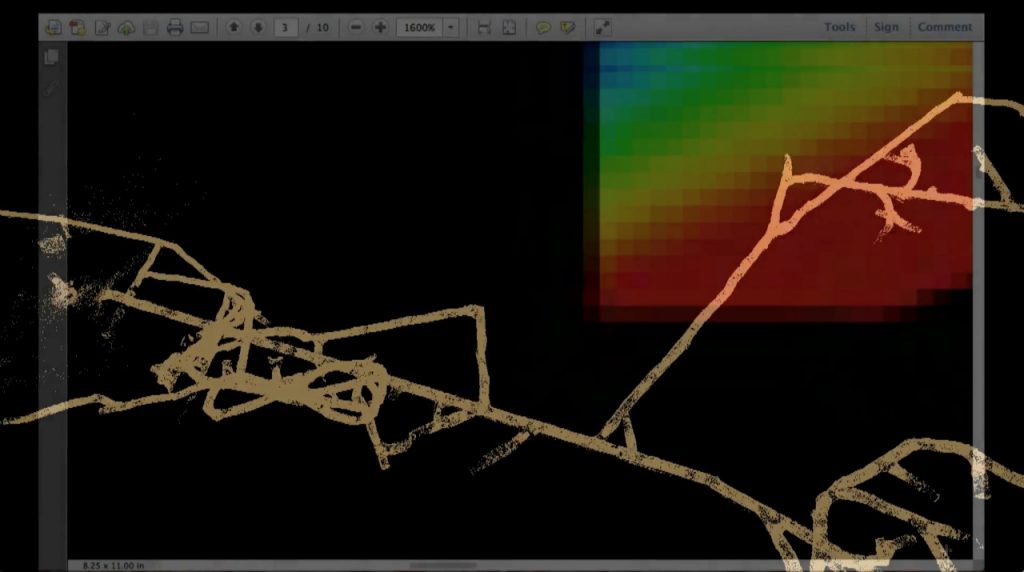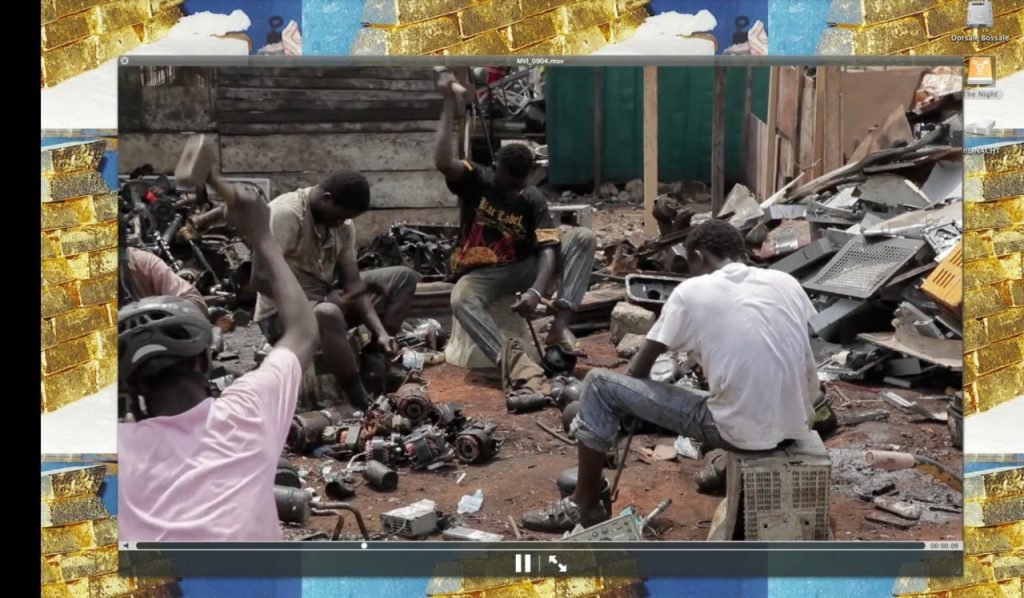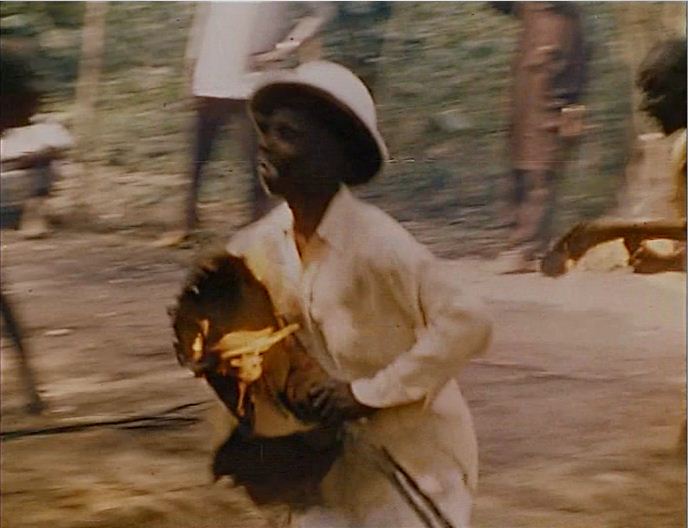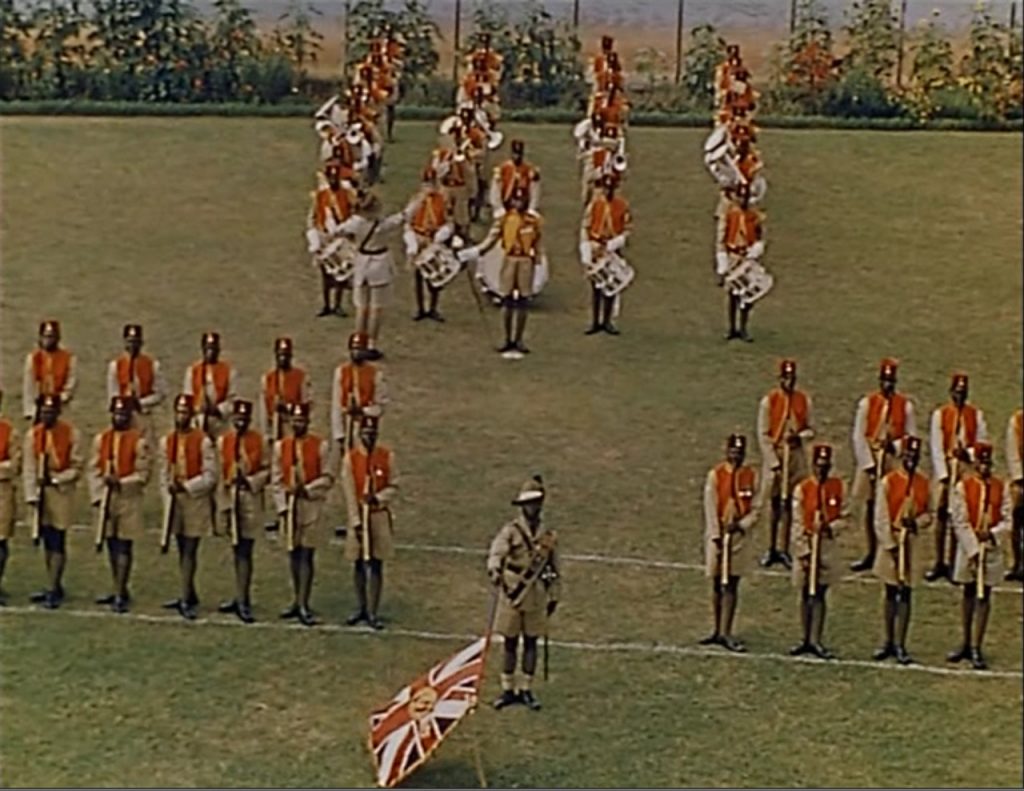(TEXT) 04/05 2015
Tunnel Montage \ Stack Soliloquies
Robert Rapoport

I.
The closing frames of All that is Solid (2014) by Louis Henderson composite a map of a goldmine, a rainbow of compression artefacts and a group of men burning computers. Both the men and the goldmine are somewhere in Ghana, but it is the artefacts that seem to link the two: Mining, and extraction more generally, drive the montage of All that is Solid, which unfolds exclusively in the GUI. The film is a fifteen-minute screencast that burrows towards an imagined core while remaining stubbornly on a desktop. The result is a kind of dissonant, recursive montage.

The film opens by scrolling down the Wikipedia entry on the Gold Coast (Modern-day Ghana). The introduction does not scale, literally or otherwise: we get half sentences composited with archival footage of men making gold bullion. A voice-over of a contemporary gold trader explains: “The good gold goes to London, while they leave the bad gold here.” This is said over four stacked QuickTimes of a hand holding some nuggets that apparently got left behind. In this nested image perhaps we have a parody of how value is created recursively in London’s Square Mile: removed from anything as solid as gold, by a path more circuitous than any mine.
II.
The litany of gold mining images gives way to a mine of a different sort: the e-waste dump of Agbogbloshie (On the outskirts of Accra); the second largest of its kind in the world. The dump ingests waste from across West Africa, but also a great deal from Western Europe. Workers, largely migrants from the interior, are charged with extracting value from planned obsolescence. Motherboards are asked to part with their copper, generally by burning. The plastics leave while the metals stay, releasing a number of toxins in the process*. Stacked and composited in the GUI these fires take on a votive quality, like so many sacrifices to Moore’s law, their smoke promising some primal source code for the bountiful (data) harvest. Here montage melds with the software stack: the foregrounded image is always already there.

In the smoke of Agbogbloshie might data exhaust have a foil? The production of value here dead-ends in the fact of a man trying to extract a meal from obsolete hardware. Software is reduced, with some final disinterestedness, to the stubborn infrastructure on which it is predicated. If we can imagine the network as a viewer, this would be the Cloud’s soliloquy to its own skull.


Compare All that is Solid to another film shot in the same place some 60 years prior: Jean Rouch’s Les Maîtres Fous (The Mad Masters, 1955), focuses on a religious cult called the Hauka in what was then the British Gold Coast. Like the workers in Agbogbloshie, the Hauka were primarily migrants from the interior doing menial work in Accra. While both groups have to metabolize something they would rather not, in the case of the Hauka the dynamic is less abstract in that they can point at the source: the British Military.
The film is structured around a ritual in which cult members are possessed by figures from the colonial hierarchy. In trance, the Hauka embody and critique power that would otherwise be inaccessible. They draw their oppressor closer to create a sense of agency; like a vaccination one is intentionally exposed to pre-empt the Real Thing.
In the film’s coda, Rouch asks: “One wonders if they (the Hauka) may have found a way to absolve our inimical (European) society?” The Hauka turned themselves into effigies to profane the British generals by proxy. They would verify their retreat from the sensory world by burning themselves while strutting around in a stiff-legged parody of a military march. Halfway through the film Rouch cuts in a colonial military ceremony suggesting it is a kind of source code for the ritual.


Both films suggest as space where protocol goes liminal. The Hauka verified their trance—their divorce from external stimuli—by using torches to burn themselves. Might we find echoes of this in the semi-votive fires of Agbogbloshie? All that is Solid seems to channel the automatism of the Hauka into the mode of montage itself: nested QuickTimes create a kind of mise-en-abyme that asks: when montage meets the network, is the only way out, through?
* Asante, Kwadwo Ansong, et al. “Multi-trace element levels and arsenic speciation in urine of e-waste recycling workers from Agbogbloshie, Accra in Ghana.” Science of the Total Environment 424 (2012): 63-73
